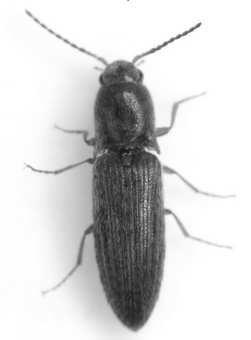Scouting cotton and other crops has been quiet the past few days except for some wireworm issues which have come up in cotton and weed control in general. First, let me state that I have given warning to this wireworm possibility showing up in most any field in are area. Wireworms are not easily sampled for during the growing season to tell us if we will have an issue the following season. It usually works out that a producer has stand problems from wireworms or false wireworms, and there is currently no treatment post plant. The only current effective management is an insecticide seed treatment or an in-furrow insecticide at plant.
The following are notes from Dr. Suhas Vyavhare, Extension Entomology Specialist, Lubbock
• The first few weeks of a cotton plant’s life are the most important.
• Facilitate quicker emergence and reduce exposure time to wireworms.
• Choose insecticide seed treatments ( e. g., imidacloprid, thiamethoxam, clothianidin)
• Add at-plant treatment (in addition to seed trt in fields with known history (e.g. in-furrow AgLogic, AdmirePro, pyrethroids)) • Controlling weeds—also, fallowing can help reducing wireworm abundance.
• Plant small grains (e.g., sorghum, winter wheat, etc.) with insecticide seed treatments (e.g., Teraxxa/Broflanilide) that control wireworms
• Plant under good growing conditions
• Tillage
• Whether to replant a field or stay with a skippy stand is a decision that should be based on costs of replanting, potential yield reduction associated with late planting and the number, condition and spacing of the remaining plants. (I am not suggesting at this late date to replant cotton. Kerry)

